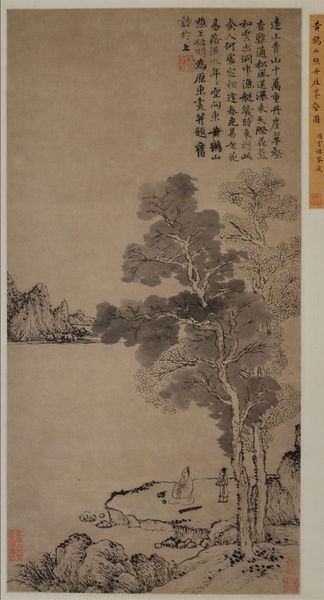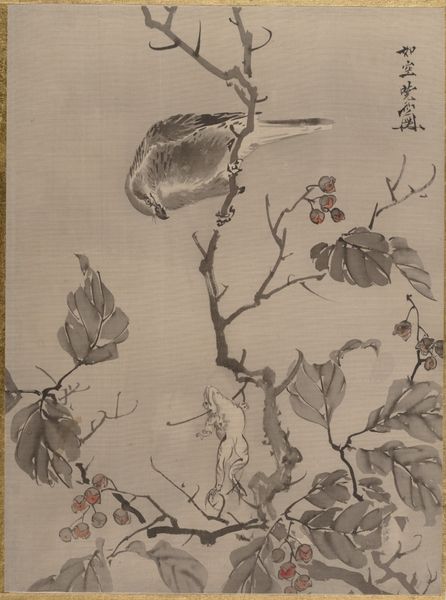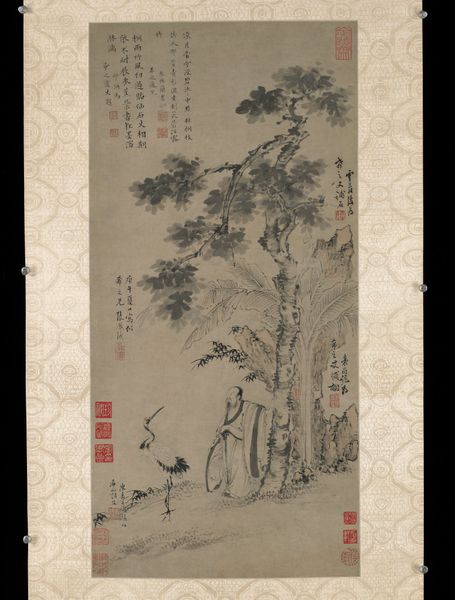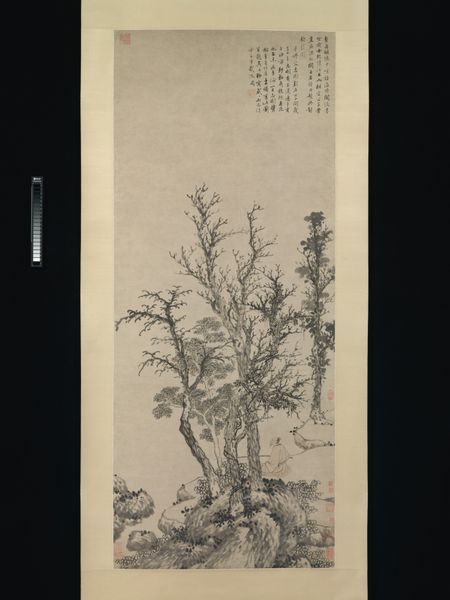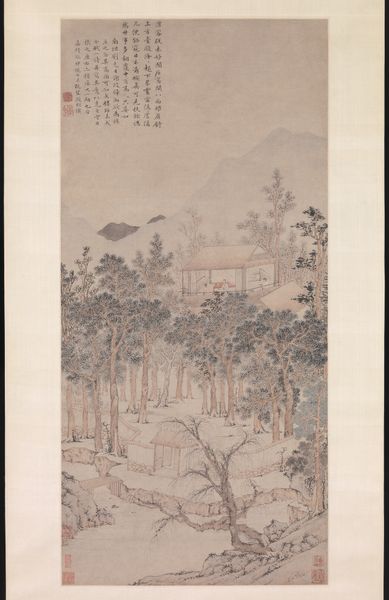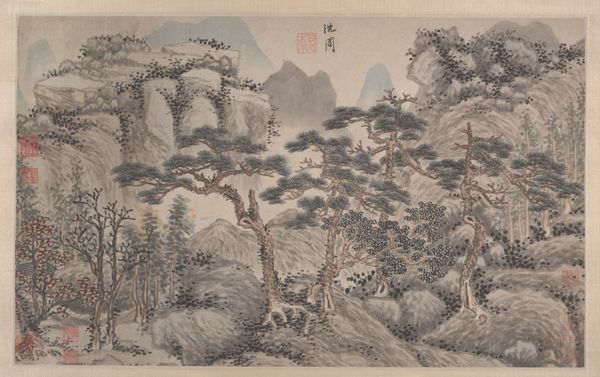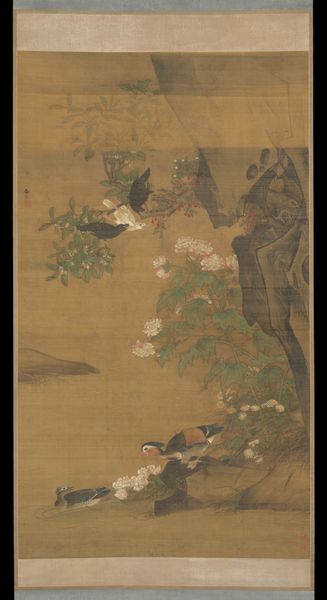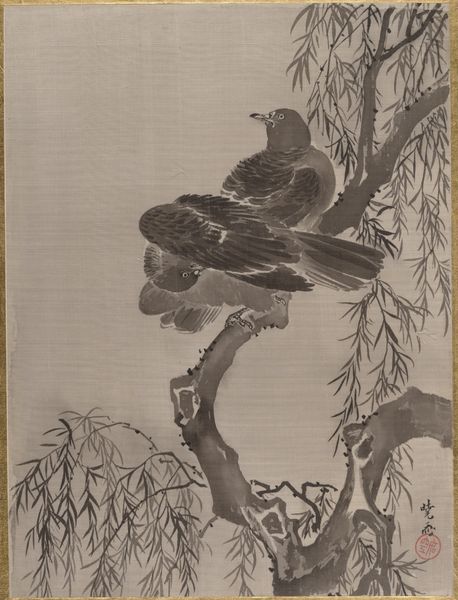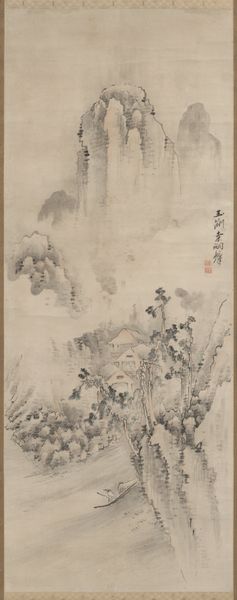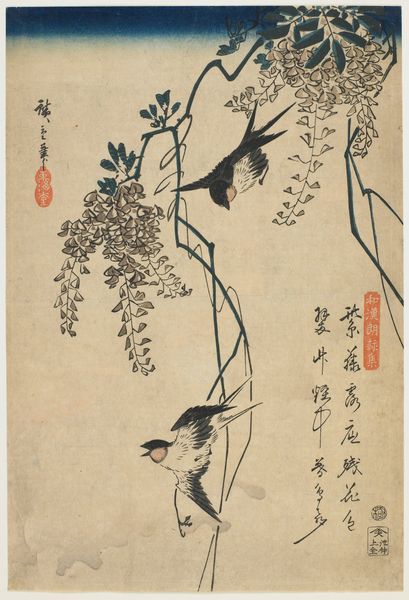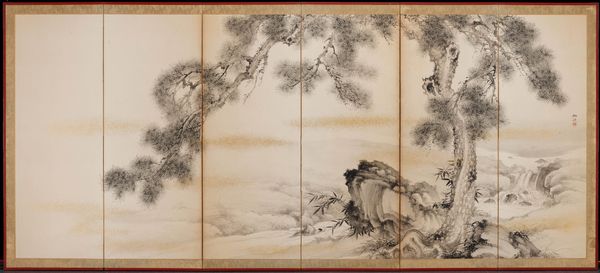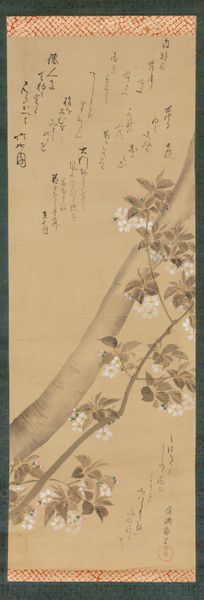
painting, ink
#
ink painting
#
painting
#
asian-art
#
landscape
#
bird
#
ink
#
24_meiji-period-1868-1912
Dimensions: 14 3/8 x 10 1/4 in. (36.5 x 26.0 cm)
Copyright: Public Domain
Curator: Here we have Kawanabe Kyōsai's "Flock of Crows at Dawn," dating from between 1877 and 1897, during the Meiji period. Editor: There's a bleak beauty to it, isn’t there? The crows seem to cling to the tree, dark silhouettes against a pale sky, maybe conveying some somber tone. I'm wondering if it was common for Japanese artists to paint crows at the time. Curator: The crow image carries different symbolic baggage in Japan than in Western art tradition, often viewed less as an omen of ill fortune and more as a figure from folklore, a divine messenger. Kawanabe Kyōsai often addressed political and cultural transformations happening then, and it's impossible to separate his artworks from such context. This period of rapid modernization put traditional arts under great pressure to reinvent their roles and relevance. Editor: Indeed. But let's look at it from a craft perspective: Kyōsai's skillful use of ink, creating such a range of textures. Note the coarse texture of the bark next to the softer gradients in the sky! This shows how carefully Kyōsai handled materials. Is there anything about how ink production impacted artists’ freedom back then? Curator: I’m unsure regarding artists’ freedom in this case, however it is worth saying that the rise of lithography impacted ink production and distribution quite drastically at the time. Editor: Also, think about the sheer number of crows! All painstakingly rendered, it feels almost like labor captured on paper. Was Kyosai associated with specific workshops or schools? That could provide additional clues. Curator: Kyosai belonged to the Kano School of painting, which significantly influenced his approach. Beyond technique, his art had a strong engagement with contemporary issues, often social commentary cloaked in traditional motifs. This piece shows his concern for changes affecting traditional lifestyles at the time. Editor: Fascinating. It does make you ponder the place of labor, materials, and tradition amid cultural upheaval. The dialogue between material practice and social realities makes it so potent. Curator: Indeed. The image gives one much to think about beyond its surface beauty, and that’s exactly why this art deserves attention today.
Comments
No comments
Be the first to comment and join the conversation on the ultimate creative platform.
